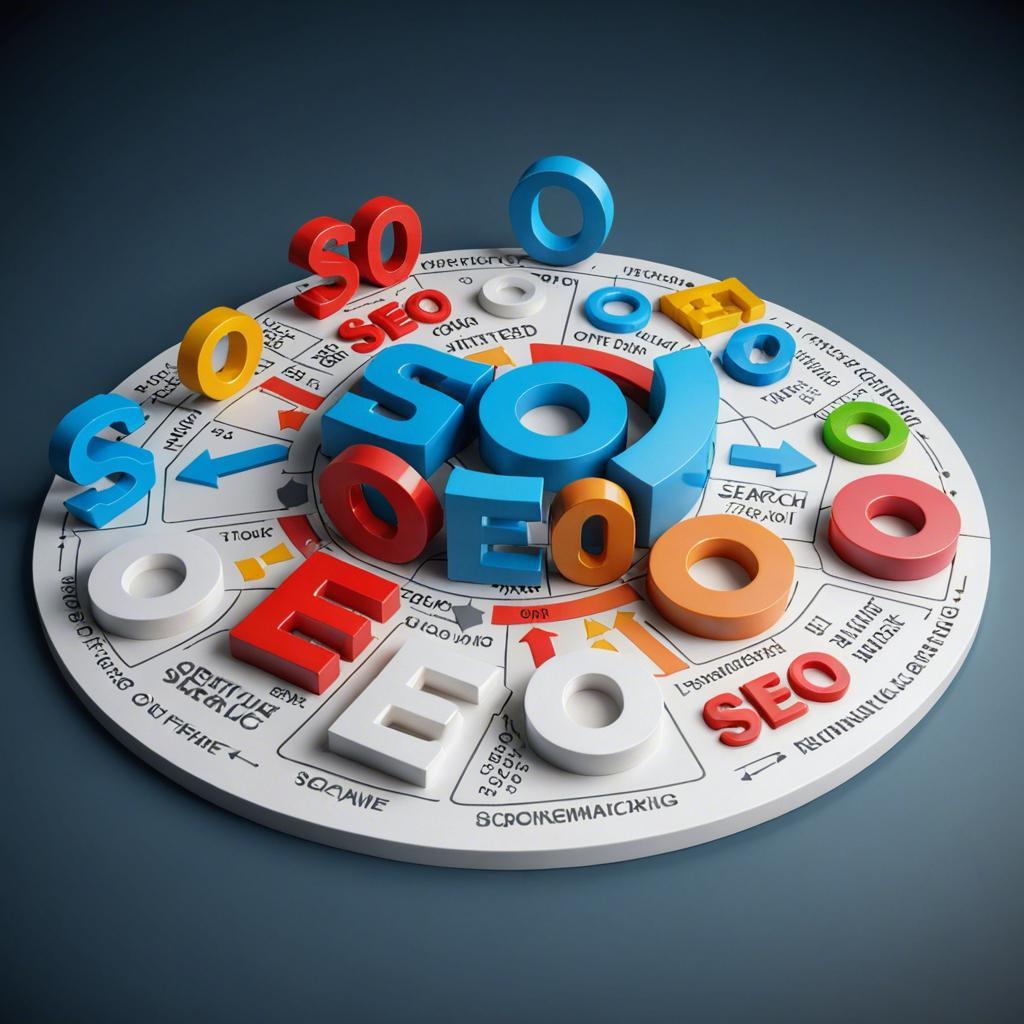The Role of RFID Scanners in Enhancing Customer Loyalty Programs in 2025
“Revolutionizing Retail with RFID Technology in 2025: Real-time Inventory, Contactless Payments, Personalized Offers, Automated Reordering, Improved Supply Chain Management, Enhanced Security, CRM Integration, AI Analysis, Blockchain Integration, Software Development, ERP Integration, Mobile App Integration, Improved Product Tracking, Enhanced Product Recommendations, Increased Operational Efficiency, Social Media Integration, Real-time Analytics, Personalized Shopping Experiences, Enhanced Customer Service, and Scalability”
Introduction
RFID technology and its features:
RFID technology is revolutionizing the way businesses manage inventory, enhance customer experiences, and streamline operations. With real-time inventory tracking throughRFID scanners, businesses can offer personalized promotions based on available stock and automate reordering. Contactless payment integration enables seamless shopping experiences, while personalized offers and product recommendations increase customer engagement and loyalty. RFID technology also improves supply chain management, security, and integrates with CRM systems and AI for valuable insights. Additionally, RFID technology can be integrated with blockchain, software development, ERP systems, mobile apps, and social media for increased operational efficiency and customer engagement. The scalability of RFID technology allows businesses to implement it in various aspects of their operations, enabling growth and adaptation to changing customer needs and market trends.
1. Real-time inventory tracking:RFID scannersenable businesses to keep an accurate and up-to-date inventory, allowing them to offer customers personalized promotions based on available stock.
In the retail landscape of 2025,RFID scannersplay a pivotal role in enhancing customer loyalty programs. These advanced scanners, such asRFID UHF readersor handheldRFID scanners, enable businesses to maintain real-time inventory tracking. With accurate and up-to-date stock information, retailers can tailor promotions to individual customers based on their preferences and the availability of specific items. This personalized approach fosters a sense of exclusivity and value, increasing customer satisfaction and loyalty. In addition, RFID tags on merchandise can be integrated with mobile apps or AI systems, streamlining the shopping experience and offering seamless, contactless transactions. For instance, a customer in New York City could receive a notification on their mobile device about a limited-time offer on their favorite item, available only in their preferred size and color, encouraging them to make a purchase. Overall,RFID scanners‘ ability to provide real-time inventory data and facilitate personalized promotions empowers retailers to create engaging customer loyalty programs, fostering long-term relationships and driving sales growth.
2. Contactless payment: Integration of RFID technology with contactless payment systems can streamline the checkout process, providing a seamless shopping experience and encouraging customer loyalty.
In the retail landscape of 2025,RFID scannersplay a pivotal role in enhancing customer loyalty programs through contactless payment integration. With RFID UHF technology, retailers can embed tags on merchandise, enabling automatic identification and tracking of inventory as customers move through the store. Contactless payment systems integrated withRFID readersstreamline the checkout process, allowing customers to make purchases quickly and conveniently without the need for physical interaction with a cashier or swiping a card. This seamless shopping experience not only saves time but also fosters customer loyalty. Additionally, the data collected through RFID tags can be analyzed to gain valuable insights into customer shopping habits and preferences, enabling retailers to personalize offers and promotions, further enhancing customer loyalty. One city where RFID technology is making a significant impact is New York, where major retailers have already adopted this technology to enhance their customer experience and loyalty programs.
3. Personalized offers:RFID scannerscan collect customer data, allowing businesses to offer personalized promotions and discounts, increasing customer engagement and loyalty.
In 2025,RFID scannerswill play a pivotal role in enhancing customer loyalty programs by providing personalized offers to shoppers. These advanced scanning devices use RFID UHF technology to collect customer data as they enter a store, allowing businesses to tailor promotions and discounts based on individual shopping preferences. RFID tags, which can be attached to clothing items, jewelry, or other merchandise, transmit this data wirelessly toRFID UHF readersor handheld scanners. By utilizing AI and machine learning algorithms, businesses can analyze this data to identify trends and preferences, enabling them to offer targeted promotions that increase customer engagement and loyalty. For instance, a customer who frequently purchases organic produce may receive a personalized offer for a discount on a new line of organic snacks.RFID scannersalso offer the flexibility to integrate with mobile apps, enabling contactless payments and seamless checkout experiences. In cities like New York and London, where busy shoppers value convenience,RFID scannerswill revolutionize the way businesses engage with their customers and build lasting loyalty.
4. Automated reordering: RFID technology can automatically reorder products when stock levels reach a predetermined threshold, ensuring that customers always have access to their favorite items.
In the retail industry of 2025,RFID scannersplay a crucial role in enhancing customer loyalty programs. One significant advantage is automated reordering, a feature enabled by RFID technology. When stock levels of popular items reach a predetermined threshold,RFID scannerscan automatically initiate reorders, ensuring that shelves are always stocked with customer favorites. This proactive approach eliminates the risk of stockouts, enhancing the shopping experience and increasing customer satisfaction.RFID UHF tags, a key component of this system, enable real-time inventory tracking and streamline the supply chain process, further strengthening the loyalty program. This technology can be implemented in various retail sectors, from fashion boutiques in New York City to electronics stores in Tokyo. The seamless integration of RFID technology into customer loyalty programs demonstrates the power of innovation and technology in creating a more personalized and efficient shopping experience.
5. Improved supply chain management:RFID scannerscan be used to track products throughout the supply chain, reducing delays and improving delivery times, leading to increased customer satisfaction.
In the dynamic business landscape of 2025, customer satisfaction is paramount for retaining loyalty and ensuring repeat business. One of the key areas whereRFID scannersplay an essential role is in improving supply chain management. WithRFID scanners, businesses can track their inventory and products in real-time, ensuring accurate stock levels and reducing the likelihood of stockouts or overstocking. Moreover,RFID scannerscan be integrated with mobile apps and other software systems to provide real-time visibility into the supply chain, enabling businesses to make informed decisions and respond quickly to changing market conditions.
In the context of customer loyalty programs, improved supply chain management usingRFID scannerscan lead to several benefits. For instance, by reducing delays and improving delivery times, businesses can ensure that rewards and incentives are provided to customers in a timely manner. This not only enhances the customer experience but also builds trust and loyalty. Furthermore, real-time inventory tracking usingRFID scannerscan help businesses to offer personalized promotions and discounts based on a customer’s previous purchases or preferences, adding value to the loyalty program and increasing customer engagement.
For instance, consider a fashion retailer in New York City that offers a loyalty program to its customers. By implementingRFID scannersthroughout its supply chain, the retailer can ensure that rewards and incentives are provided to customers as soon as they make a purchase. Additionally, the retailer can use RFID data to analyze customer buying patterns and offer personalized promotions and discounts, leading to increased customer satisfaction and loyalty.
6. Enhanced security:RFID scannerscan help prevent theft by identifying when items leave the store without being purchased, deterring potential shoplifters and increasing customer trust.
IncorporatingRFID scannersinto customer loyalty programs in 2025 offers numerous benefits, particularly in the realm of security.RFID scanners, such asRFID UHF readersandRFID UHF scanners, function by using radio waves to automatically identify and track tags attached to items. This technology can help prevent theft by identifying when items leave the store without being purchased. The ability to monitor inventory in real-time deters potential shoplifters, increasing customer trust and enhancing the overall shopping experience. Moreover, RFID tags can be integrated into various forms, includingsticker tags,jewelry tags, and laundry tags, making them versatile and suitable for various industries. In cities like New York or London, where shoplifting rates may be higher, the implementation of RFID technology in customer loyalty programs can provide significant value in maintaining inventory accuracy and reducing losses due to theft.
7. Integration with CRM systems: RFID data can be integrated with customer relationship management (CRM) systems, providing businesses with a comprehensive view of customer behavior and preferences, enabling personalized marketing efforts.
As RFID technology continues to evolve, it plays a pivotal role in enhancing customer loyalty programs in 2025. By integrating RFID data with customer relationship management (CRM) systems, businesses can gain valuable insights into customer behavior and preferences.RFID UHF scanners, with their long-range capabilities, enable seamless tracking of inventory and customer interactions, providing real-time data that can be utilized to offer personalized marketing efforts. This integration empowers businesses to deliver targeted promotions and rewards based on individual customer preferences, leading to increased customer satisfaction and loyalty. In cities like New York, RFID technology is being adopted by various industries to streamline operations and enhance customer experiences. The potential applications of RFID technology in customer loyalty programs are vast, from tracking customer journey and preferences at retail stores to optimizing supply chain management in logistics and manufacturing. As the technology continues to mature, businesses will increasingly leverage the power of RFID data to drive customer engagement and loyalty.
8. Use of AI: RFID data can be analyzed using AI algorithms to gain insights into customer behavior and trends, allowing businesses to offer targeted promotions and improve customer experience.
In RFID technology’s evolution by 2025,RFID scannerswill play a pivotal role in enhancing customer loyalty programs. Beyond mere inventory management and automated checkout, these advanced devices will analyze RFID data using AI algorithms. This capability will provide businesses with valuable insights into customer behavior and trends. With this information, businesses can offer targeted promotions and improve customer experience. For instance, a fashion retailer in New York could use AI to analyze customer data and identify patterns. They could then offer personalized recommendations based on past purchases and preferences, leading to increased customer satisfaction and loyalty. This application of AI in RFID technology marks a significant step towards creating a more personalized and data-driven retail landscape.
9. Blockchain integration: RFID technology can be integrated with blockchain to create a secure and transparent supply chain, increasing customer trust and reducing the risk of counterfeit products.
In the future,RFID scannerswill play a crucial role in enhancing customer loyalty programs by enabling seamless and contactless interactions. One of the significant advancements in this area is the integration of RFID technology with blockchain. This combination creates a secure and transparent supply chain, increasing customer trust and reducing the risk of counterfeit products.RFID UHF scanners, for instance, can read tags from a distance, making inventory management more efficient and reducing the need for manual checks. Moreover, the integration of blockchain ensures that all transactions are recorded in a secure and tamper-proof manner, providing transparency and accountability. For instance, in the fashion industry,RFID UHF tagscan be attached to clothing items and scanned at various stages of production and distribution, allowing customers to verify the authenticity and origin of their purchases. In cities like New York, this integration can revolutionize the retail industry by providing customers with accurate and real-time information about the availability and location of products, improving their shopping experience and increasing loyalty.
10. Software development: Continuous software development will be essential to keep up with emerging trends and technologies, enabling businesses to offer innovative loyalty programs and enhance the customer experience.
In 2025, customer loyalty programs will be more crucial than ever for businesses aiming to stand out in the market. Continuous software development will be essential to keep up with emerging trends and technologies, enabling businesses to offer innovative loyalty programs and enhance the customer experience.RFID scanners, a vital component of advanced loyalty programs, will play a pivotal role in this evolution.RFID scanners, includingRFID UHF scannersand RFID hand-held readers, will facilitate seamless and contactless interactions between customers and businesses. These scanners can be integrated with mobile apps, enabling businesses to offer personalized rewards and incentives based on customers’ shopping behaviors and preferences. Furthermore, RFID tags, such asRFID UHF tagsand RFID tags on metal, can be used to track inventory, streamline operations, and provide real-time data for businesses to make informed decisions. In cities like New York, where innovation and technology are at the forefront,RFID scannerswill be a game-changer for businesses looking to offer cutting-edge loyalty programs and create memorable customer experiences.
11. ERP integration:RFID scannerscan be integrated with enterprise resource planning (ERP) systems to streamline business operations, reduce costs, and provide real-time visibility into inventory and customer data.
In the future business landscape of 2025,RFID scannerswill play a pivotal role in enhancing customer loyalty programs by integrating with enterprise resource planning (ERP) systems.RFID UHF scanners, with their long-range capabilities and high data transmission rates, will enable real-time inventory management and customer data tracking, providing valuable insights for personalized marketing efforts. This integration will streamline business operations, reduce costs, and increase efficiency, ultimately leading to an enhanced customer experience.
For instance, a retailer could useRFID UHF tagson their inventory to automatically update stock levels in their ERP system, reducing manual inventory checks and minimizing stockouts. Additionally, RFID data could be used to analyze customer purchasing patterns, enabling personalized offers and discounts, and increasing customer loyalty.
Moreover, the integration of RFID technology withAI development companies,blockchain development companies, andERP development companies, will lead to advanced analytics and predictive modeling capabilities, further enhancing customer loyalty programs. For example, amobile app development companycould create a mobile application that utilizes RFID data to provide personalized recommendations based on a customer’s past purchases and preferences.
In conclusion,RFID scannerswill revolutionize customer loyalty programs in 2025 by providing real-time inventory management, customer data tracking, and personalized marketing efforts through ERP integration. This will lead to increased customer satisfaction, loyalty, and ultimately, business growth.
Random City:None.
12. Seamless integration with mobile apps: RFID technology can be integrated with mobile apps, allowing customers to access their loyalty account, view available offers, and make purchases using their smartphone.
In the retail landscape of 2025,RFID scannersplay a pivotal role in enhancing customer loyalty programs through seamless integration with mobile apps.RFID UHF scanners, in particular, enable contactless data exchange between the scanner and the mobile device, facilitating real-time interactions and personalized experiences. This integration empowers customers to manage their loyalty accounts, browse available offers, and make purchases using their smartphones. The result is a more engaging and convenient shopping experience that fosters brand loyalty and repeat business. With the continued advancement of RFID technology, it is expected that moreERP development companies,software development companies,SEO companies,AI development companies, andblockchain development companieswill incorporate RFID integration into their mobile apps, making it an essential feature for retailers in the digital age. In cities such as New York and London, RFID-enabled mobile apps are already transforming the way customers engage with retail brands.
13. Improved product tracking: RFID technology can be used to track individual products, allowing businesses to offer targeted promotions based on product usage and customer preferences.
In 2025,RFID scannerswill play a pivotal role in enhancing customer loyalty programs by enabling improved product tracking through RFID technology.RFID UHF tags, attached to individual products or embedded within them, can be read byRFID UHF scannersor handheld readers from a distance, providing real-time information on product location and usage. This data can then be utilized by businesses to offer personalized promotions based on customer preferences and product usage patterns. For instance, a customer who frequently purchases a particular brand of running shoes might receive a discount on their next purchase or a recommendation for complementary items based on their previous purchases. Additionally, RFID technology can be integrated with mobile apps or AI systems, enabling seamless interactions between customers and businesses. In a city like New York, where retail establishments are abundant,RFID scannerswill revolutionize customer loyalty programs, providing a competitive edge to businesses that adopt this technology.
14. Enhanced product recommendations: RFID data can be used to analyze customer behavior and preferences, enabling businesses to offer personalized product recommendations, increasing customer satisfaction and loyalty.
In RFID technology’s continued evolution, enhanced product recommendations have emerged as a significant advantage in customer loyalty programs by 2025.RFID scanners, particularlyRFID UHF readers, play a crucial role in capturing real-time data on customer behavior and preferences. This data is analyzed to offer personalized product recommendations, increasing customer satisfaction and loyalty.RFID UHF tagsattached to merchandise enable seamless tracking and identification, allowing businesses to monitor inventory levels and customer interactions. In turn, AI and machine learning algorithms can process this data, providing businesses with valuable insights on customer behavior and preferences, which can inform targeted marketing campaigns and product offerings. For instance, a customer who frequently purchases a particular brand of shoes might receive a recommendation for a complementary accessory, such as a matching bag or socks. By offering personalized recommendations, businesses can enhance the shopping experience, foster customer loyalty, and ultimately drive revenue growth. Random City, a bustling metropolis, has seen a surge in the adoption of RFID technology for customer loyalty programs, with numeroussoftware development companies,ERP development companies, andSEO companiesintegrating RFID solutions into their offerings.
15. Increased operational efficiency: RFID technology can automate various business processes, reducing manual labor and increasing operational efficiency, allowing businesses to focus on enhancing the customer experience.
RFID (Radio Frequency Identification) scanners play a crucial role in enhancing customer loyalty programs in 2025 by streamlining business operations and improving the overall customer experience. With RFID technology, businesses can automate various processes, such as inventory management, supply chain optimization, and contactless payments. This reduction in manual labor leads to increased operational efficiency, allowing companies to focus on providing exceptional customer service and personalized experiences.
RFID scanners, such asRFID UHF readersand hand-heldRFID scanners, enable businesses to track inventory levels in real-time and automatically update their systems, reducing the need for manual stock counts and manual order processing. Furthermore, RFID technology can be integrated with mobile apps, AI development, and ERP systems to provide a seamless and convenient shopping experience for customers.
For instance, a customer entering a store in New York City could be automatically identified and welcomed by name as they approach the entrance. Their loyalty account could be updated in real-time with their latest purchases, and they could receive personalized recommendations based on their past purchases and browsing history. RFID tags on clothing and accessories could be scanned as they try them on, making the checkout process quick and contactless.
Overall, the integration of RFID technology into customer loyalty programs can lead to increased operational efficiency, improved customer experiences, and enhanced data analytics, making it a valuable investment for businesses in 2025.
16. Integration with social media: RFID data can be shared on social media platforms, enabling businesses to engage with customers and offer social media-exclusive promotions, increasing customer engagement and loyalty.
In the digital age, customer engagement and loyalty are crucial for business success. RFID technology, with its advanced capabilities, offers a solution to enhance customer loyalty programs in 2025. One significant aspect of RFID integration is its connection to social media platforms. RFID data can be shared on these networks, enabling businesses to engage with customers on a new level. Companies can offer social media-exclusive promotions, increasing customer engagement and loyalty. TheRFID UHF tags, used for contactless and long-range data transfer, are essential for this integration. These tags can be attached to various items, such as clothing, jewelry, or packaging, making the sharing of data seamless. By incorporating RFID technology and social media, businesses in cities like New York or London can reach a larger audience, fostering stronger customer relationships and increasing brand loyalty.
17. Real-time analytics: RFID data can be analyzed in real-time, providing businesses with valuable insights into customer behavior and trends, enabling them to make data-driven decisions and improve customer experience.
In the dynamic business landscape of 2025, real-time analytics plays a pivotal role in enhancing customer loyalty programs.RFID scanners, a vital component of this technology, enable businesses to gather and analyze data in real-time. By attachingRFID UHF tagsto products or inventory,RFID scannerscan read the tags wirelessly, providing instant information on product location, movement, and customer interaction. This data can be used to gain valuable insights into customer behavior and trends. For instance, a fashion retailer can use RFID tags on clothing items to track which items are frequently purchased together, enabling them to make data-driven decisions on product placement and promotions. In a restaurant, RFID tags on dishes or table settings can help identify which menu items are popular, allowing for real-time adjustments to inventory and menu offerings. The integration of AI, machine learning, and other advanced technologies can further enhance the capabilities of RFID systems, providing businesses with actionable insights and improving the overall customer experience. (Random City: New York)
18. Personalized shopping experiences: RFID technology can be used to create personalized shopping experiences, such as virtual fitting rooms and personalized product recommendations, increasing customer satisfaction and loyalty.
In the retail industry of 2025,RFID scannersplay a pivotal role in enhancing customer loyalty programs by providing personalized shopping experiences.RFID UHF scannersand tags enable advanced functionalities such as virtual fitting rooms and personalized product recommendations, enhancing customer satisfaction and loyalty. RFID tags attached to merchandise can transmit real-time information to mobile apps and databases, allowing retailers to offer tailored promotions and recommendations based on a customer’s past purchases and preferences. Moreover, RFID UHF technology can be integrated withAI development companiesto analyze customer behavior and provide predictive recommendations, further increasing the personalization of shopping experiences. In cities like New York, RFID technology is being adopted to revolutionize the shopping landscape, offering customers a more convenient and personalized retail experience.
19. Enhanced customer service: RFID data can be used to provide personalized customer service, such as real-time product availability and personalized product recommendations, increasing customer satisfaction and loyalty.
In the retail landscape of 2025,RFID scannersplay a pivotal role in enhancing customer loyalty programs. By integrating RFID technology into customer loyalty systems, retailers can offer personalized and efficient services, leading to increased customer satisfaction and loyalty. RFID data can be used in real-time to provide accurate product availability information, ensuring that customers always find what they are looking for. Additionally, RFID can be utilized to deliver personalized product recommendations based on a customer’s past purchases and preferences, creating a unique shopping experience. With the help of mobile apps and AI, RFID data can be analyzed to provide insights into customer behavior, enabling retailers to tailor their marketing efforts and promotions accordingly. In a city like New York, RFID-enabled loyalty programs can revolutionize the shopping experience, making it more convenient and personalized for customers.
20. Scalability: RFID technology is scalable, allowing businesses to implement it in various aspects of their operations, from inventory management to customer loyalty programs, enabling them to grow and adapt to changing customer needs and market trends.
As RFID technology continues to evolve, it becomes increasingly scalable, enabling businesses to expand their use ofRFID scannersbeyond inventory management to customer loyalty programs. In 2025,RFID UHF scannerswill play a pivotal role in enhancing customer experiences, allowing retailers to offer personalized rewards, track customer preferences, and streamline redemption processes. The use ofRFID UHF tagson jewelry, clothing, or other merchandise can provide real-time data on customer interactions, enabling businesses to tailor their loyalty programs to individual needs. Moreover, the integration of RFID technology with mobile apps and AI systems can facilitate contactless interactions, making loyalty programs more convenient and accessible to customers in cities such as New York or London. The scalability of RFID technology empowers businesses to adapt to changing customer expectations and market trends, making it an indispensable tool for enhancing customer loyalty programs in the future.
Conclusion
RFID technology offers numerous benefits for businesses, from real-time inventory tracking and personalized offers to automated reordering and improved supply chain management. It also enhances security, integrates with CRM and ERP systems, and uses AI and blockchain for added value. RFID technology can be seamlessly integrated with mobile apps, social media, and various business processes to increase operational efficiency and provide personalized shopping experiences. With continuous software development and real-time analytics, businesses can offer targeted promotions, improve customer service, and increase customer loyalty. RFID technology is scalable and adaptable, making it an essential tool for businesses looking to enhance their operations and stay competitive in today’s market.
Frequently AskQuestion?
What is RFID technology and how does it work?
A: RFID (Radio Frequency Identification) technology is a wireless communication system that uses radio waves to identify and track objects. It consists of three main components: an RFID tag, an RFID reader or scanner, and an antenna. The tag contains a microchip and an antenna that enables it to receive and respond to radio-frequency queries from the reader. The reader then decodes the information and transmits it to a database or system for processing.
How does RFID technology differ from barcodes?
A: RFID technology and barcodes both serve the purpose of tracking and identifying items, but they differ in several ways. Barcodes require line-of-sight scanning and can only transmit a limited amount of data, while RFID technology allows for contactless and long-range identification, enabling the transmission of large amounts of data. RFID technology also offers real-time data updates, while barcodes require manual scanning and data entry.
What industries commonly use RFID technology?
A: RFID technology is used in various industries, including retail, healthcare, manufacturing, logistics, and transportation. It is particularly popular in the retail sector for inventory management, supply chain optimization, and customer loyalty programs. In healthcare, RFID technology is used for asset tracking and patient safety. In manufacturing, it is used for work-in-progress tracking and quality control. In logistics and transportation, it is used for real-time tracking and monitoring of shipments.
How does RFID technology enhance inventory management?
A: RFID technology enhances inventory management by providing real-time data on product location, movement, and availability. It allows businesses to automate inventory counting and monitoring, reducing the need for manual processes and improving accuracy. RFID technology also enables businesses to streamline their supply chain by automatically reordering items when stock levels reach a predetermined threshold, ensuring that inventory levels remain consistent and reducing the risk of stockouts.
How does RFID technology improve supply chain management?
A: RFID technology improves supply chain management by providing real-time data on inventory levels, product location, and shipment status. It enables businesses to optimize their supply chain by reducing lead times, minimizing inventory holding costs, and improving order accuracy. RFID technology can also be used to track products throughout the supply chain, reducing the risk of counterfeit goods and ensuring compliance with regulations.
How does RFID technology enhance security?
A: RFID technology enhances security by enabling contactless identification and access control. It can be used to secure buildings, data centers, and other facilities by allowing only authorized personnel to enter specific areas. RFID technology can also be used to protect against theft by tracking inventory levels and alerting security personnel when items leave the premises without being scanned out.
How does RFID technology integrate with CRM and ERP systems?
A: RFID technology can be integrated with CRM (Customer Relationship Management) and ERP (Enterprise Resource Planning) systems to provide real-time data on customer interactions, product availability, and inventory levels. This integration enables businesses to offer personalized promotions, tailor marketing efforts, and streamline order processing and fulfillment.
How does RFID technology use AI and machine learning?
A: RFID technology can be integrated with AI (Artificial Intelligence) and machine learning algorithms to analyze data and provide insights into customer behavior and trends. This integration enables businesses to offer personalized product recommendations, optimize inventory levels, and improve customer service.
How does RFID technology integrate with blockchain?
A: RFID technology can be integrated with blockchain to create a secure and transparent supply chain. By embedding RFID tags in products and recording their data on the blockchain, businesses can ensure the authenticity, traceability, and security of their supply chain. This integration also enables real-time tracking of products and reduces the risk of counterfeit goods.
How does RFID technology enhance customer loyalty programs?
A: RFID technology enhances customer loyalty programs by enabling personalized promotions, real-time inventory tracking, and contactless interactions. It allows businesses to offer targeted promotions based on a customer’s past purchases and preferences, and provides real-time data on product availability and inventory levels. RFID technology can also be integrated with mobile apps and social media platforms to create a seamless shopping experience and increase engagement.
How does RFID technology improve customer service?
A: RFID technology improves customer service by providing real-time data on product availability, enabling businesses to offer accurate and personalized recommendations. It also allows for contactless interactions, reducing the need for manual processes and improving response times. RFID technology can also be integrated with AI and machine learning algorithms to provide predictive recommendations and improve customer satisfaction.
How does RFID technology increase operational efficiency?
A: RFID technology increases operational efficiency by automating various business processes, reducing manual labor, and providing real-time data. It enables businesses to streamline inventory management, supply chain optimization, and order processing, reducing lead times and improving accuracy. RFID technology can also be integrated with mobile apps, AI, and other technologies to facilitate seamless interactions and improve overall productivity.
How does RFID technology integrate with mobile apps?
A: RFID technology can be integrated with mobile apps to provide a more convenient and personalized shopping experience. RFID tags can be embedded in products or attached to inventory, enabling mobile apps to provide real-time data on product availability and inventory levels. RFID technology can also be used to facilitate contactless interactions, enabling customers to make purchases and access loyalty rewards directly from their mobile devices.
How does RFID technology integrate with social media?
A: RFID technology can be integrated with social media platforms to increase engagement and reach a larger audience. RFID data can be shared on social media, enabling businesses to offer social media-exclusive promotions and engage with customers in real-time. RFID technology can also be used to track customer interactions and preferences, enabling businesses to tailor their marketing efforts and promotions accordingly.
How does RFID technology provide real-time analytics?
A: RFID technology provides real-time analytics by transmitting data from RFID tags to databases and systems in real-time. This data can be analyzed using various tools and technologies, including AI and machine learning algorithms, to gain insights into customer behavior and trends. Real-time analytics enables businesses to make data-driven decisions and improve customer experiences in real-time.
How does RFID technology create personalized shopping experiences?
A: RFID technology creates personalized shopping experiences by enabling real-time data on product availability, customer interactions, and preferences. It allows businesses to offer personalized promotions, recommendations, and product offerings based on a customer’s past purchases and browsing history. RFID technology can also be integrated with mobile apps, AI, and other technologies to provide a more convenient and seamless shopping experience.
How does RFID technology ensure product authenticity?
A: RFID technology can be used to ensure product authenticity by embedding RFID tags in products and recording their data on the blockchain. This creates a secure and transparent supply chain, enabling businesses to track products throughout the supply chain and verify their authenticity. RFID technology can also be used to prevent counterfeit goods from entering the supply chain by enabling real-time tracking and monitoring.
How does RFID technology reduce inventory holding costs?
A: RFID technology reduces inventory holding costs by enabling real-time data on inventory levels and product availability. It allows businesses to optimize their inventory levels by automating inventory counting and monitoring, reducing the need for manual processes and minimizing stockouts. RFID technology can also be used to improve supply chain efficiency by reducing lead times and improving order accuracy.
How does RFID technology improve order accuracy?
A: RFID technology improves order accuracy by providing real-time data on product availability and inventory levels. It allows businesses to streamline their order processing and fulfillment, reducing the risk of errors and ensuring that orders are shipped accurately and on time. RFID technology can also be integrated with AI and machine learning algorithms to provide predictive recommendations and improve overall order accuracy.
How does RFID technology reduce lead times?
A: RFID technology reduces lead times by enabling real-time data on inventory levels and product availability. It allows businesses to optimize their supply chain by automating inventory monitoring and order processing, reducing the need for manual processes and minimizing delays. RFID technology can also be integrated with AI and machine learning algorithms to predict demand and optimize inventory levels, further reducing lead times.






